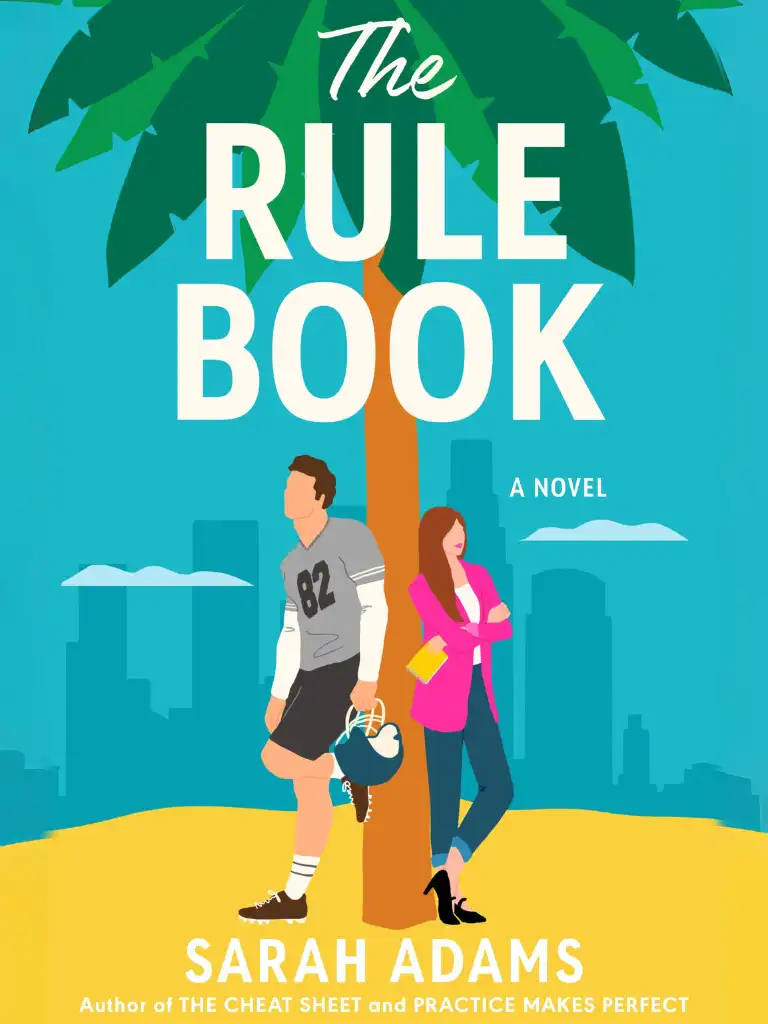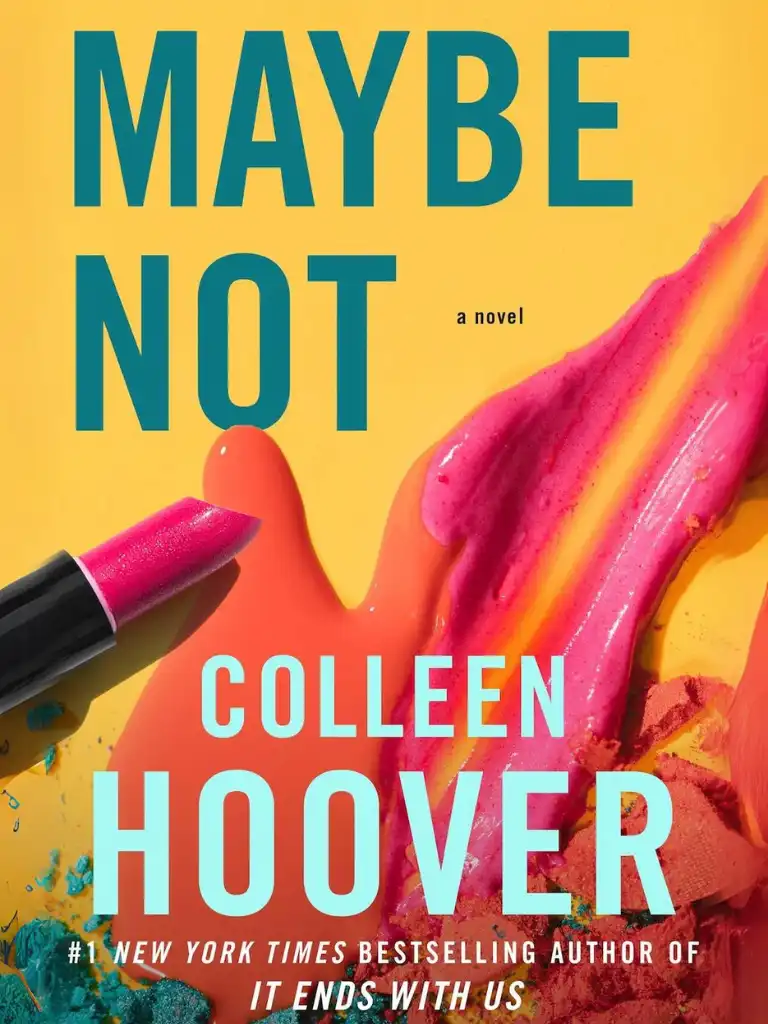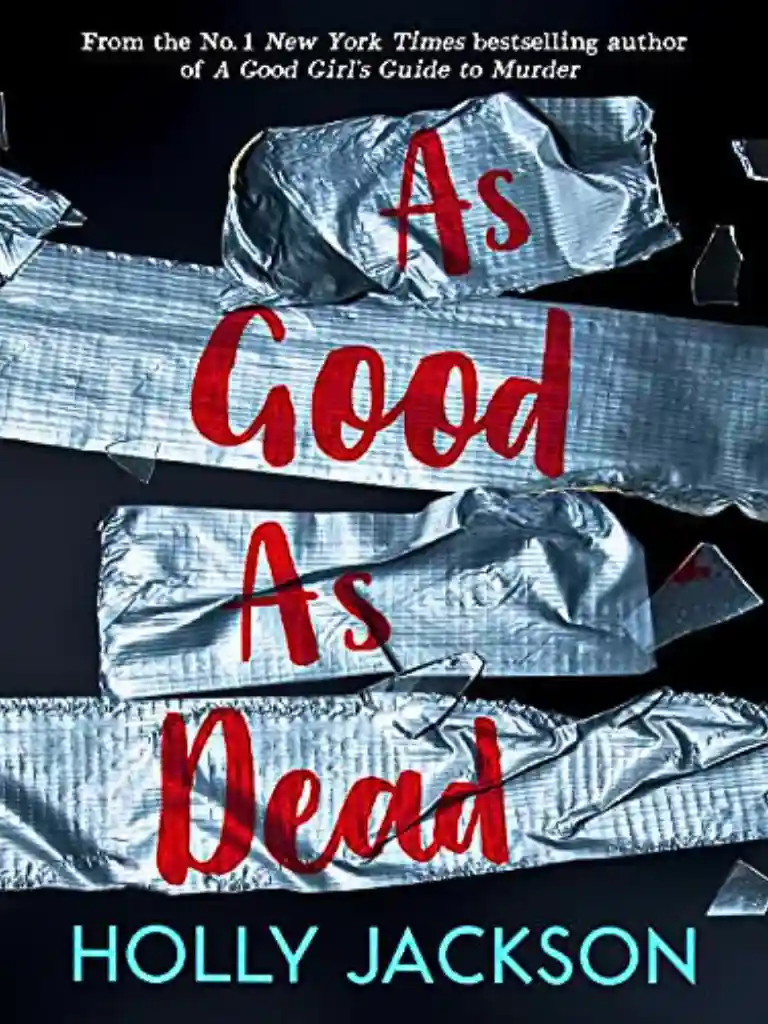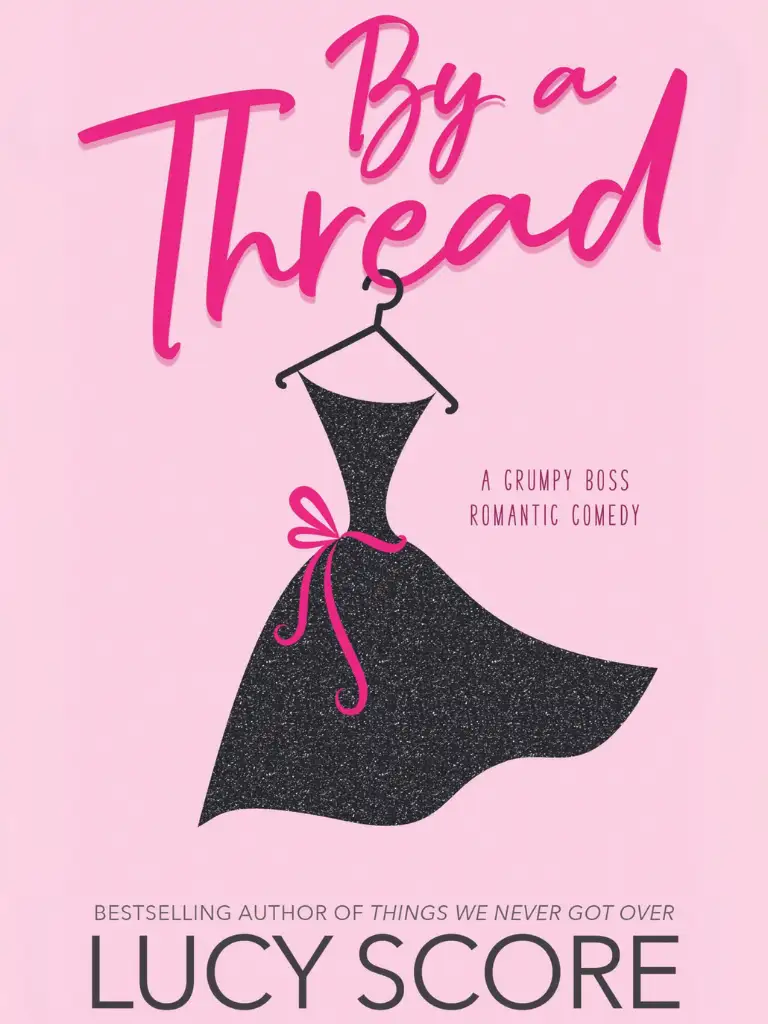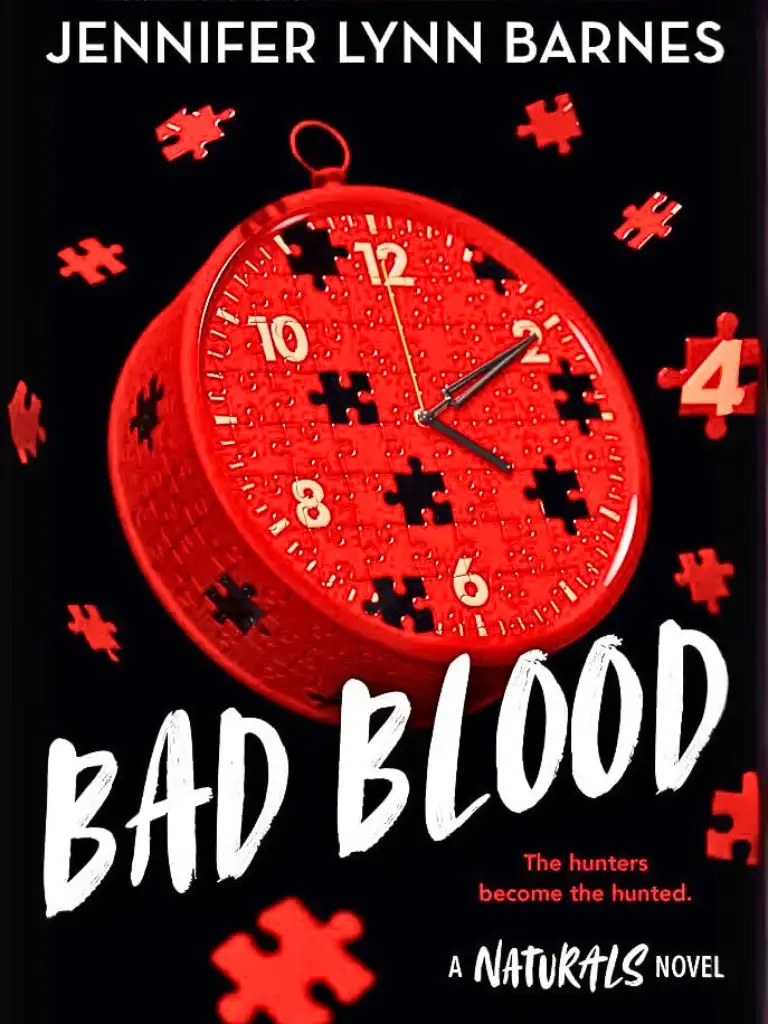I sleep poorly and wake up feeling awful. Caroline Maxwell has treated me better than I deserve—she’s welcomed me into her home, she’s trusted me with her child, she’s given me everything I need to start a new life—and I can’t stand knowing she’s angry with me. I lie in bed imagining a hundred different ways to say I’m sorry. And eventually I can’t put it off any longer, I have to get out of bed and face her.
When I arrive at the main house, Teddy’s down under the kitchen table, dressed in his pajamas, playing with his Lincoln Logs. Caroline’s at the kitchen sink, washing the breakfast dishes, and I offer to take over. “Also, I wanted to say I’m sorry.”
Caroline turns off the water. “No, Mallory, I’m sorry. I had too much wine, and I was wrong to blow up at you. It’s been bothering me all morning.”
She opens her arms and we hug and we both apologize again, at the same time. And then we’re laughing together and I know everything is going to be fine.
“You’re still welcome here in the main house,” she reminds me. “You could take the bedroom next to Teddy’s. I’d only need a day to get it ready.”
But I don’t want to cause her any more inconvenience. “The cottage is perfect,” I tell her. “I love it out there.”
“Okay, but if you change your mind—”
I take the dish towel from her hand and nod at the clock on the microwave oven. It’s 7:27 and I know Caroline likes
to be on the road by 7:35, before the traffic turns horrendous. “Let me finish,” I tell her. “Go have a great day.” So Caroline leaves for work and I get down to business.
There isn’t really much to clean—just a few cups and cereal bowls, and the wineglasses from the night before. After I load everything into the dishwasher, I get down on my hands and knees and crawl under the kitchen table. Teddy has built a two-story farmhouse out of Lincoln Logs, and now he’s surrounding it with tiny plastic animals.
“What are we playing?”
“They’re a family. They live together.” “Can I be the pig?”
He shrugs. “If you want.”
I push the pig around the other animals and make it beep-beep-beep like a car. Normally Teddy loves this joke. He loves it when I make the animals honk like a truck or choo-choo like a train. But this morning he just turns his back to me. And, of course, I know what’s wrong.
“Teddy, listen. I want to talk about last night. I think your daddy misunderstood me. Because I love all your drawings. Even the ones with Anya. I always look forward to seeing your pictures.”
Teddy pushes a plastic cat up a table leg, like it’s climbing a tree. I try to move in front of him, try to force eye contact, but he swivels away. “I want you to keep sharing your drawings, okay?”
“Mommy says no.”
“But I’m saying you can. It’s fine.”
“She says you’re not well, and scary pictures could make you sick again.”
I sit up so fast I bang my head on the bottom of the table. The pain is white hot and for the next few moments I can’t move. I just squeeze my eyes shut and hold my hand to my scalp.
“Mallory?”
I open my eyes and I realize I finally have his attention. He looks frightened. “I’m fine,” I tell him. “And I need you to listen very carefully. There’s nothing you can do that would make me sick. You don’t have to worry. I am one hundred percent fine.”
Teddy gallops a horse up my leg and parks it on my knee. “Is your head okay?”
“My head is fine,” I tell him, even though it’s throbbing like crazy and I can feel a bump swelling on my scalp. “I just need to put something on it.”
I spend the next few minutes sitting at the kitchen table, pressing a sandwich bag of ice to the top of my skull. Down at my feet, Teddy is pretend-playing with all his different farm animals. Each creature has its own distinct voice and personality. There’s stubborn Mr. Goat and bossy Mama Hen, a brave black stallion and a silly baby duckling, more than a dozen characters in all.
“I don’t want to do my chores,” the horse says.
“But rules are rules,” Mama Hen tells him. “We all have to follow the rules!”
“It’s not fair,” Mr. Goat complains.
On and on it goes—the conversation pivots from chores to lunch to a secret treasure buried in the forest behind the barn. I’m impressed by Teddy’s ability to remember all the different characters and their voices. But, of course, this is what Ted and Caroline have been saying all along: Their son has an extremely active imagination. End of story.
Later that afternoon, when Teddy goes to his bedroom for Quiet Time, I wait a few minutes then follow him upstairs. By the time I press my ear to the door of his bedroom, he’s already in the middle of a conversation.
“… or we could build a fort.” “ ”
“Or play tag.” “ ”
“No, I can’t. I’m not allowed.” “ ”
“They said I can’t.” “..….….….….….….….….….….….….….….….….….….….….…
…..….….….….….….….….….….….….….….….….….….….….….…
. ”
“I’m sorry but—” “..….….….….….….….….….….….….….….….….….….….….….
….….….….….….….….….….….….……..….….….….….….….….….
… ”
“I don’t understand.” “ ”
Then he laughs, like she’s proposed something ridiculous. “I guess we could try?”
“ ”
“How do we—okay. Right.” “..….….….….….….….….….….….….….….….….….……..….….
… ”
“Oh, it’s cold!”
There’s no more speaking after that—but as I strain to hear what’s happening, I detect a kind of whisper—the sound of a pencil scratching on paper.
Drawing?
Is he drawing again?
I go downstairs, sit at the kitchen table, and wait. Normally Quiet Time isn’t much more than an hour, but
Teddy stays in his room twice as long. And when he finally comes down to the kitchen, he’s empty-handed.
I smile at him. “There he is!”
He climbs up onto a kitchen chair. “Hello.” “No drawing today?”
“Can I have cheese and crackers?” “Sure.”
I go over to the refrigerator and fix him a plate. “So what were you doing upstairs?”
“Can I have some milk?”
I pour him a small cup of milk, then carry everything over to the kitchen table. As he reaches for a cracker, I notice his palms and fingers are covered with black smudges. “Maybe you should wash your hands,” I suggest. “It looks like you’ve got pencil on them.”
He hurries over to the sink and washes his hands without comment. Then he returns to the table and starts eating the crackers. “Do you want to play LEGOs?”
And for the next few days, things are pretty normal. Teddy and I fill the hours with LEGOs and puppet shows, Play-Doh and Shrinky Dinks, coloring books and Tinkertoys and endless trips to the grocery store. He is a brave, adventurous eater and he loves to sample strange and exotic foods. Some days we’ll walk to Wegmans and buy jicama or a kumquat, just to see what they taste like.
He’s one of the most curious children I’ve ever met, and he loves to challenge me with imponderable questions: Why are there clouds? Who invented clothes? How do snails work? I am constantly reaching for my phone and checking Wikipedia. One afternoon in the swimming pool, Teddy points at my chest and asks why I have bumps poking through my swimsuit. I don’t make a big deal out of it. I just say they’re part of my body and the cold water makes them hard.
“You have them, too,” I tell him. He laughs. “No, I don’t!”
“Sure you do! Everybody does.”
Later, when I’m rinsing off in the outdoor shower stall, I hear him knocking on the wooden door.
“Hey, Mallory?”
“Yeah?”
“Can you see your girl parts?” “How do you mean?”
“If you look down? Can you see them?” “It’s hard to explain, Teddy. Not really?” There’s a long pause.
“Then how do you know they’re there?”
And I’m glad there’s a door between us, so he can’t see me laughing. “I just know, Teddy. They’re definitely there.”
That night I mention the incident to Caroline and instead of laughing she seems alarmed. The next day she comes home with a giant stack of picture books with titles like It’s Perfectly Normal! and Where Did I Come From? They’re way more explicit than the books I had growing up. There are detailed definitions of anal sex, cunnilingus, and genderqueer expression. With full-color drawings and everything. I mention that it all seems a bit much for a five-year-old, but Caroline disagrees. She says it’s essential human biology and she wants Teddy to learn the facts at an early age so he won’t get misinformation from his friends.
“I understand, but cunnilingus? He’s five.”
Caroline glances at the cross hanging from my neck, like somehow that’s the problem. “Next time he has questions, just send him to me. I want to answer them.”
I try to assure her that I am totally capable of answering Teddy’s questions but she makes it clear the conversation is over. She’s already opening kitchen cabinets and noisily gathering pots and pans to make dinner. It’s the first night in a while she doesn’t invite me to stay and eat with them.
Two-hour Quiet Times are getting more and more common, and I don’t know how Teddy passes the time. Sometimes I’ll lurk outside his door and I’ll hear him speaking to himself, weird nonsensical fragments of conversation. Or I’ll hear
him sharpening pencils or ripping pages from his spiralbound sketch pad. Clearly, he’s still drawing—and somehow hiding his work from me and his parents.
So Friday afternoon I decide to do a little snooping. I wait until Teddy goes to make number two, because I know I’ll have a good ten or fifteen minutes (he sits on the toilet for a long time, flipping through a stack of picture books). As soon as I hear him lock the door, I hurry upstairs to the second floor.
Teddy has a bright sunny bedroom that always smells a little bit like urine. There are two big windows overlooking the backyard, and Caroline has instructed me to leave them open all day long, even if the central air is running, because I think this helps to diminish the smell. The walls are painted a cheerful sky-blue and adorned with posters of dinosaurs, sharks, and The LEGO Movie characters. Teddy’s furniture consists of a bed, a short bookshelf, and a dresser, so you might think a search wouldn’t take very long. But I know a thing or two about hiding stuff. During my first year on OxyContin I was still living at home and I had little stashes of pills and paraphernalia all over my bedroom, crammed into places my mother would never think to look.
I roll back his rug, I pull down all his picture books, I remove the dresser drawers and peer inside the empty cavities. I shake the curtains and stand on his bed to carefully inspect the valances. I sift through a mountain of stuffed animals piled high in a corner of his bedroom—a pink dolphin, a tattered gray donkey, a dozen Ty Beanie Babies. I tug the sheets off his mattress and reach beneath the mattress pad and finally I lift the entire mattress off the frame, turning it onto its side, so I have a clear view of the floor.
“Mallory?” Teddy is shouting through the door of the first-floor powder room. “Can you bring me toilet paper?”
“Just a second!”
I’m not finished yet. I still have to go through the closet. I sift through all the adorable outfits that we can never convince Teddy to wear—beautiful collared shirts, miniature khakis and designer blue jeans, tiny leather belts for his twenty-two-inch waist. I spy three board games on the top shelf of the closet—Clue, Mousetrap, and Sorry!—and I’m certain I’ve found my treasure trove. But then I open the boxes and shake out the boards and all I find are game pieces and playing cards. No drawings.
“Mallory? Did you hear me?”
I put the games back in the closet, close the door, and make sure the room is more or less as I found it.
Then I grab a roll of toilet paper from the laundry room and hurry downstairs to the first-floor bathroom. “Here you go,” I tell him. He opens the door a crack, just wide enough for me to pass the paper.
“Where were you?” he asks. “Just tidying up.”
“All right.”
He pushes the door closed and I hear the button lock click.
I spend the weekend convinced I’m being paranoid. I have no proof that Teddy is still drawing pictures. The scratching sounds from his bedroom could be anything. The black grit on his fingers could be dirt from our gardening projects, or the normal grimy smudges of a five-year-old boy. Everything else seems to be going fine, so what am I worried about?
Monday morning, I awaken to the sound of sanitation trucks making their slow rumbling crawl down Edgewood Street. They come twice a week—on Mondays for recycling, and again on Thursdays for regular trash. And in an instant I remember the one spot I didn’t think to check: the wastebasket in Ted’s second-floor office. Teddy has to walk
right past it to get downstairs. It would be an easy place for him to discard his drawings, on his way out of his bedroom.
I spring out of bed, grateful that I sleep in running shorts and a T-shirt, and I sprint out my door and across the lawn. The grass is still wet with morning dew and I nearly wipe out rounding the side of the house. The truck is three doors away so I only have a minute to spare. I run to the end of the driveway, where Ted drags the blue containers every Sunday night—one for metals and glass, the other for papers and cardboard. I plunge my hands deep inside, past shreds of junk mail and utility bills, take-out menus and credit card statements and a heaping stack of mail order catalogs: Title Nine, Lands End, L.L.Bean, Vermont Country Store, they arrive every day by the dozen.
The recycling truck pulls alongside me, and a skinny guy wearing work gloves smiles at me. There’s a tattoo of a dragon coiled around his bicep.
“Lose something?”
“No, no,” I tell him. “You can take it.”
But then he reaches for the bin and all its contents shift, revealing a giant ball of crumped paper, with the same confetti edges familiar to Teddy’s drawings.
“Wait!”
He holds out the bin, allowing me to grab the ball, and I carry it back up the driveway to my cottage.
Once inside, I boil some water, make myself a mug of tea, and then sit down to study the papers. It’s a bit like peeling an onion. There are nine pages total and I use my palm to smooth out all the wrinkles. The first few drawings don’t look like anything. They’re just scribbles. But as I turn the pages there’s more control and more detail. The composition improves. There’s light and shadow. It’s like a sketchbook for some strange work in progress; some of the pages are cluttered with drawings, many of them half-finished.


